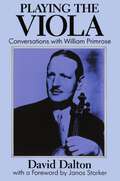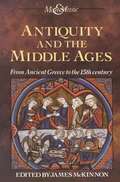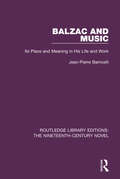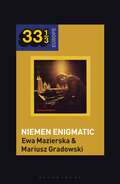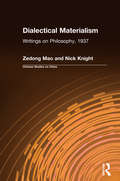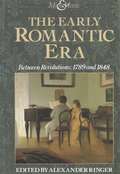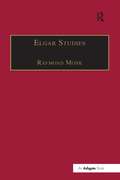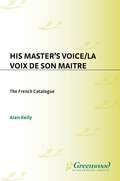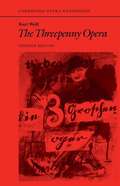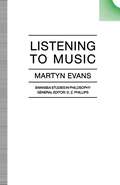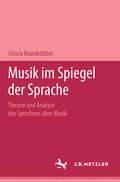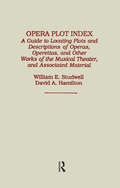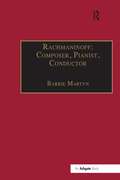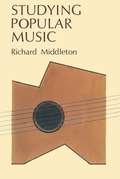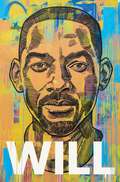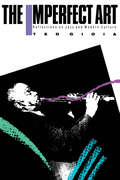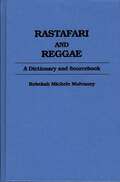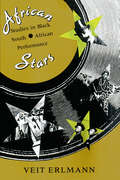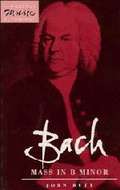- Table View
- List View
Playing the Viola: Conversations with William Primrose
by David Dalton`In all areas of human endeavour, time and again an individual appears who, due to a multitude of personal attributes, elevates his or her field to a hitherto unknown height. Such an individual was William Primrose. His name and the viola are synonymous.' Janos Starker This unique book is the result of a series of conversations with Primrose in the last years before his death in 1982. David Dalton describes how he came to the great artist armed with every question he could think of pertaining to performing on and teaching the viola. The lively dialogue contains a wealth of illuminating advice for the student on the technicalities of playing the viola. It is, however, far more than a technical guide. The two violists discuss the unique position of their instrument - `an instrument without tradition' is Primrose's bald description. They cover the topic of repertoire with fascinating insights into the performance of the great concertos by Bartók and Walton, with which Primrose was so closely associated. Still more invaluable advice emerges from the discussion of Primrose's own experience, on the art of performance, on demeanour on stage, on competitions, on recordings, and on preparing for a career. The book is a tribute to one of the greatest artists of this century.
Antiquity and the Middle Ages: From Ancient Greece to the 15th century (Man & Music)
by James McKinnonFrom the series examining the development of music in specific places during particular times, this book looks at ancient and medieval music, from Classical and Christian antiquity to the emergence of the Gregorian chant and the medieval town and Court.
Balzac and Music: Its Place and Meaning in His Life and Work (Routledge Library Editions: The Nineteenth-Century Novel)
by Jean-Pierre BarricelliFirst published in 1990, this book was the first comprehensive study of Balzac’s relationship to music, blending past scholarship with new perspectives to formulate an inclusive account. It begins by examining the contacts and experiences that shaped the musical side of Balzac’s life. These left valuable and lasting impressions which often found their way into his writings, where he recorded a myriad of critical and musicological opinions — assessed primarily in relation to Gambara and Massimilla Doni. These discussions prepare the way for an analysis of Balzac two major musical persuasions: religious music and Beethoven. This book will be of interest to students of literature and music.
Balzac and Music: Its Place and Meaning in His Life and Work (Routledge Library Editions: The Nineteenth-Century Novel)
by Jean-Pierre BarricelliFirst published in 1990, this book was the first comprehensive study of Balzac’s relationship to music, blending past scholarship with new perspectives to formulate an inclusive account. It begins by examining the contacts and experiences that shaped the musical side of Balzac’s life. These left valuable and lasting impressions which often found their way into his writings, where he recorded a myriad of critical and musicological opinions — assessed primarily in relation to Gambara and Massimilla Doni. These discussions prepare the way for an analysis of Balzac two major musical persuasions: religious music and Beethoven. This book will be of interest to students of literature and music.
Czeslaw Niemen's Niemen Enigmatic (33 1/3 Europe)
by Mariusz Gradowski Ewa MazierskaNiemen Enigmatic is the fourth album in the career of Czeslaw Niemen, arguably one of the greatest Polish musicians of all time (from pop and rock to jazz-rock and avant-garde). The book asks how significant was this album? How enduring is its popularity? Has the popularity and meanings changed over time? It does this by unpacking its production, which was unprecedented in the history of the Polish popular music due to its large number of musicians with varied backgrounds, including progressive rock, mixing jazz, rock and soul with classical music. It also examines its appeal to different segments of Polish population, and failure to reach foreign audiences, despite Niemen himself privileging this album, especially its centrepiece, Bema pamieci zalobny rapsod (Mournful Rhapsody in Memoriam of Bem aka A Funeral Rhapsody in Memory of General Bem aka Mourner's Rhapsody), in his attempt to make a career abroad.
Dialectical Materialism: Writings on Philosophy, 1937
by Zedong Mao Nick KnightNew and annotated translations of philosophical essays written by Mao Zedong in 1937, which have come to be regarded as a cornerstone in the development of Chinese Marxism. The editor analyzes their textual, philosophical and historical significance.
Dialectical Materialism: Writings on Philosophy, 1937
by Zedong Mao Nick KnightNew and annotated translations of philosophical essays written by Mao Zedong in 1937, which have come to be regarded as a cornerstone in the development of Chinese Marxism. The editor analyzes their textual, philosophical and historical significance.
Early Romantic Era: Between Revolutions, 1789 and 1848 (Man & Music)
by Alexander L. RingerOne of a series examining the development of music in specific places during particular times. This volume looks at the development of music in the early Romantic era, 1789-1849, in Paris, Berlin, Dresden, Leipzig, London, Italy, the USA, Moscow, St Petersburg and Latin America.
Elgar Studies
by Raymond MonkEdward Elgar rose from obscurity to become the most popular English composer of his day. Elgar's music is known world-wide and works such as the 'Enigma Variations' and 'The Dream of Gerontius' together with the two symphonies and the two concertos have established him as one of the greatest British composers of all time. The Elgar Society was founded in 1951 to further the cause of Elgar's music and the present volume of essays has been compiled as an expression of gratitude for the work that it has done. These essays reflect the variety and richness of Elgar's music and the debate that this music continues to encourage. The book is not simply for academics however; lovers of music in general will find much to entertain them and it will add greatly to our appreciation of Elgar.
Elgar Studies
by Raymond MonkEdward Elgar rose from obscurity to become the most popular English composer of his day. Elgar's music is known world-wide and works such as the 'Enigma Variations' and 'The Dream of Gerontius' together with the two symphonies and the two concertos have established him as one of the greatest British composers of all time. The Elgar Society was founded in 1951 to further the cause of Elgar's music and the present volume of essays has been compiled as an expression of gratitude for the work that it has done. These essays reflect the variety and richness of Elgar's music and the debate that this music continues to encourage. The book is not simply for academics however; lovers of music in general will find much to entertain them and it will add greatly to our appreciation of Elgar.
His Master's Voice/La Voix de Son Maitre: The French Catalogue; A Complete Numerical Catalogue of French Gramophone Recordings made from 1898 to 1929 in France and elsewhere by The Gramophone Company Ltd. (Discographies: Association for Recorded Sound Collections Discographic Reference)
by Alan KellyThis is a companion volume to the Italian catalogue, La Voce del Padrone, already published by Greenwood Press. This new volume provides a complete catalogue of French gramophone recordings made by the Gramophone Company Ltd. between 1898 and 1929. During this period the Compagnie Francaise du Gramophone was the continental European, African, and Asian end of a powerful partnership between the Victor Talking Machine Company and the Gramophone Company Ltd.The volume includes details of Victor recordings issued outside the Americas and hence is a useful adjunct to the series The Encyclopedic Discography of Victor Recordings, also published by Greenwood Press. The first three sections conform to the previously established pattern of listing Gramophone black and celebrity labels followed by the Zonophone green labels and the Gramophone green labels. In 1920, it was decided to issue records specifically for the Belgian/Flemish market; these are detailed in the fourth section. The contents of each section are listed in numerical order following the pattern of the early printed catalogues, that is, bands followed by orchestras followed by talking, etc. A list of the series actually used precedes each section and acts as a table of contents for the section. Each catalogue entry comprises as much as possible of the following information: the original numerical catalogue number; the matrix (serial) number; the date of the recording; the name of the artist(s) involved; the title of the piece; alternative issue numbers; and occasional notes. The introduction provides an overview of the company's recording practices and cataloging systems. This volume provides much-needed guidance for the serious collector and will be a valuable resource for the music historian.
Kurt Weill: "the Threepenny Opera" (pdf) (Cambridge Opera Handbooks Ser.)
by Stephen HintonThis is a book on the best known of the Weill-Brecht collaborations which explores the extent and significance of the composer's contribution. After a detailed reconstruction of the work's genesis and continued revision over three decades, Stephen Hinton examines the spin-offs on which Weill and Brecht participated: the instrumental suite, the film, the lawsuit, the novel, and the musical and textual revisions of songs. In a survey of the stage history, Hinton pays particular attention to pioneering productions in Germany and Great Britain. Kim Kowalke provides an exhaustive account of the history of The Threepenny Opera in America, Geoffrey Abbott addresses questions concerning authentic performance practice, and David Drew analyses large-scale motivic relationships in the music. Among the earliest writings on the work reprinted here, those by Theodor W. Adorno, Ernst Bloch and Walter Benjamin appear for the first time in English translation. The book contains numerous illustrations, a discography, and music examples.
Listening to Music (Swansea Studies in Philosophy)
by Martyn EvansIn this book the author argues that human musical understanding is rooted in the traditions of culture and that experience of music depends crucially on what the individual brings to it.
Opera Plot Index
by David Hamilton William E. StudwellFirst Published in 1990. Information about individual operas and other types of musical theater is scattered throughout the enormous literature of music. This book is an effort to bring that data together by comprehensively indexing plots and descriptions of individual operatic background, criticism and analysis, musical themes and bibliographical references. The principal audience for this general reference guide will be for the non-specialist, but its hoped that persons specialising in opera would also find it useful.
Opera Plot Index
by David Hamilton William E. StudwellFirst Published in 1990. Information about individual operas and other types of musical theater is scattered throughout the enormous literature of music. This book is an effort to bring that data together by comprehensively indexing plots and descriptions of individual operatic background, criticism and analysis, musical themes and bibliographical references. The principal audience for this general reference guide will be for the non-specialist, but its hoped that persons specialising in opera would also find it useful.
Rachmaninoff: Composer, Pianist, Conductor
by Barrie MartynThis study is the first to consider all three of Rachmaninoff's careers in detail. After surveying his place in Russian musical history and his creative activity, the author examines, with musical examples, each working chronological order against the background of the composer's life. Among the the many subjects upon which new light is shed are the operas, the songs, and the religious music. Rachmaninoff's remarkable career as a pianist, his style of playing and repertoire are analysed along with his historically important contribution to the gramophone and his work for the reproducing piano. The book includes a survey of his activity as a conductor. There are extensive references to Russian sources and the first appearance of a complete Rachmaninoff disconography is included. This book is the only comprehensive study in any language of the three aspects of Rachmaninoff's musical career and is a stimulating read for music lovers everywhere.
Rachmaninoff: Composer, Pianist, Conductor
by Barrie MartynThis study is the first to consider all three of Rachmaninoff's careers in detail. After surveying his place in Russian musical history and his creative activity, the author examines, with musical examples, each working chronological order against the background of the composer's life. Among the the many subjects upon which new light is shed are the operas, the songs, and the religious music. Rachmaninoff's remarkable career as a pianist, his style of playing and repertoire are analysed along with his historically important contribution to the gramophone and his work for the reproducing piano. The book includes a survey of his activity as a conductor. There are extensive references to Russian sources and the first appearance of a complete Rachmaninoff disconography is included. This book is the only comprehensive study in any language of the three aspects of Rachmaninoff's musical career and is a stimulating read for music lovers everywhere.
Studying Popular Music (UK Higher Education OUP Humanities & Social Sciences Media, Film & Cultural Studies)
by Richard MiddletonA critical analysis of issues and approaches in a variety of areas, ranging from the political economy of popular music through its history and ethnography to its semiology, aesthetics and ideology. The book focuses on Anglo-American popular music of the last 200 years.
Will: The Sunday Times Bestselling Autobiography
by Will Smith Mark MansonThe Instant Sunday Times BestsellerThe Instant #1 New York Times BestsellerPRAISE FOR WILL'The best memoir I ever read' Oprah Winfrey'If you read one book this year, make it this one' Jay Shetty'Incredible' Idris Elba'The book is awesome. So candid and considered...fascinating' Chris Evans'A triumph...really inspiring, so well written, vulnerable and deep. I highly recommend it' Mindy Kaling'It's fantastic...very moving' Zoe Ball'Incredibly honest...inspiring' Greg James'A wild ride' New York Times'Raw, comedic, inspirational' GQOne of the most dynamic and globally recognized entertainment forces of our time opens up fully about his life, in a brave and inspiring book that traces his learning curve to a place where outer success, inner happiness, and human connection are aligned. Along the way, Will tells the story in full of one of the most amazing rides through the worlds of music and film that anyone has ever had.Will Smith's transformation from a fearful child in a tense West Philadelphia home to one of the biggest rap stars of his era and then one of the biggest movie stars in Hollywood history, with a string of box office successes that will likely never be broken, is an epic tale of inner transformation and outer triumph, and Will tells it astonishingly well. But it's only half the story. Will Smith thought, with good reason, that he had won at life: not only was his own success unparalleled, his whole family was at the pinnacle of the entertainment world. Only they didn't see it that way: they felt more like star performers in his circus, a seven-days-a-week job they hadn't signed up for. It turned out Will Smith's education wasn't nearly over. This memoir is the product of a profound journey of self-knowledge, a reckoning with all that your will can get you and all that it can leave behind. Written with the help of Mark Manson, author of the multi-million-copy bestseller The Subtle Art of Not Giving a F*ck, Will is the story of how one exceptional man mastered his own emotions, written in a way that can help everyone else do the same. Few of us will know the pressure of performing on the world's biggest stages for the highest of stakes, but we can all understand that the fuel that works for one stage of our journey might have to be changed if we want to make it all the way home. The combination of genuine wisdom of universal value and a life story that is preposterously entertaining, even astonishing, puts Will the book, like its author, in a category by itself.'Bracingly honest, vivid and compelling ... how an average talent became the biggest movie star in the world' The Times'The Hollywood star's autobiography is full of indiscretions, drug-fuelled escapades and terrible parenting. Who could ask for more?' Telegraph'It's not every day a Hollywood A-lister like Will Smith writes his life story - and there are certainly some eye-popping revelations' Sun'Candid ... digs into the life events which fine-tuned Smith's weapons-grade charisma and steely determination' Observer'I absolutely loved it...no holds barred...I felt as if Will Smith was talking to me. It's a testament to him and to his family' Lorraine Kelly
The Imperfect Art: Reflections on Jazz and Modern Culture
by Ted GioiaTaking a wide-ranging approach rare in jazz criticism, Ted Gioia's brilliant volume draws upon fields as disparate as literary criticism, art history, sociology, and aesthetic philosophy in order to place jazz within the turbulent cultural environment of the twentieth century. He argues that because improvisation--the essence of jazz--must often fail under the pressure of on-the-spot creativity, we should view jazz as an "imperfect art" and base our judgments of it on an "aesthetics of imperfection." Incorporating the thought of such seminal thinkers as Walter Benjamin, José Ortega y Gasset, and Roland Barthes, The Imperfect Art offers vivid portraits of the giants of jazz and startling insights into this vital musical form and the interaction of society and art.
Rastafari and Reggae: A Dictionary and Sourcebook
by Becky Mulvaney Carlos NelsonA combination dictionary and annotated discography, videography and bibliography, this sourcebook brings together listings of materials on the Rastafarian movement and reggae music. . . . This sourcebook serves as a good introduction to Rastafari and reggae. Reference Books BulletinCoinciding with the sixtieth anniversary of Rastafari, this reference book traces the relationship between two intertwined aspects of Jamaican culture: Rastafari and reggae music. As important voices in the ongoing dialogue concerning Jamaica's search for a national identity, Rastafari and reggae have had a significant impact on international music and culture. This work is the first to document and describe these areas for researchers, providing a comprehensive dictionary of terms, people, places, and concepts relevant to Rastafari, reggae music, and their related histories. In a unique collaboration from the American and Jamaican perspectives, Mulvaney and Nelson have supplied annotated references and cross references for written materials, audio recordings, videocassettes, and films that cover the first sixty years of Rastafari and over twenty years of reggae music.The book is comprised of four main sections. The dictionary serves as the focal point for the cross referencing of the entire book and offers entries that are either directly related to Rastafari and reggae or provide a historical context. The discography, which includes 200 entries, represents a cross section of reggae music from 1968 to 1990 and is organized by musician or band name. A small, representative sample of documentary, concert, and narrative fiction videocassettes that address aspects of Rastafari or reggae music are catalogued in the videography, along with selected films. Finally, the bibliography, prepared by Carlos I.H. Nelson, provides a thorough overview of journal and magazine articles, creative works, dissertations, books, interviews, parts of books, reviews, and theses written by and about Rastafarians and reggae musicians. It covers the past importance, present significance, and future legacies of the movement and the music. The work also includes two appendices that list relevant periodicals and representative musicians and bands. Music students and researchers will find Rastafari and Reggae to be a valuable reference source, as will students in Caribbean and cultural studies, communication, history, and anthropology courses. For academic, public, and music library collections, the book will be an important addition.
African Stars: Studies in Black South African Performance (Chicago Studies in Ethnomusicology)
by Veit ErlmannIn recent years black South African music and dance have become ever more popular in the West, where they are now widely celebrated as expressions of opposition to discrimination and repression. Less well known is the rich history of these arts, which were shaped by several generations of black artists and performers whose struggles, visions, and aspirations did not differ fundamentally from those of their present-day counterparts. In five detailed case studies Veit Erlmann digs deep to expose the roots of the most important of these performance traditions. He relates the early history of isicathamiya, the a cappella vocal style made famous by Ladysmith Black Mambazo. In two chapters on Durban between the World Wars he charts the evolution of Zulu music and dance, studying in depth the transformation of ingoma, a dance form popular among migrant workers since the 1930s. He goes on to record the colorful life and influential work of Reuben T. Caluza, South Africa's first black ragtime composer. And Erlmann's reconstruction of the 1890s concert tours of an Afro-American vocal group, Orpheus M. McAdoo and the Virginia Jubilee Singers, documents the earliest link between the African and American performance traditions. Numerous eyewitness reports, musicians' personal testimonies, and song texts enrich Erlmann's narratives and demonstrate that black performance evolved in response to the growing economic and racial segmentation of South African society. Early ragtime, ingoma, and isicathamiya enabled the black urban population to comment on their precarious social position and to symbolically construct a secure space within a rapidly changing political world. Today, South African workers, artists, and youth continue to build upon this performance tradition in their struggle for freedom and democracy. The early performers portrayed by Erlmann were guiding lights—African stars—by which the present and future course of South Africa is being determined.
African Stars: Studies In Black South African Performance (Chicago Studies In Ethnomusicology Ser.)
by Veit ErlmannIn recent years black South African music and dance have become ever more popular in the West, where they are now widely celebrated as expressions of opposition to discrimination and repression. Less well known is the rich history of these arts, which were shaped by several generations of black artists and performers whose struggles, visions, and aspirations did not differ fundamentally from those of their present-day counterparts.In five detailed case studies Veit Erlmann digs deep to expose the roots of the most important of these performance traditions. He relates the early history of isicathamiya, the a cappella vocal style made famous by Ladysmith Black Mambazo. In two chapters on Durban between the World Wars he charts the evolution of Zulu music and dance, studying in depth the transformation of ingoma, a dance form popular among migrant workers since the 1930s. He goes on to record the colorful life and influential work of Reuben T. Caluza, South Africa's first black ragtime composer. And Erlmann's reconstruction of the 1890s concert tours of an Afro-American vocal group, Orpheus M. McAdoo and the Virginia Jubilee Singers, documents the earliest link between the African and American performance traditions. Numerous eyewitness reports, musicians' personal testimonies, and song texts enrich Erlmann's narratives and demonstrate that black performance evolved in response to the growing economic and racial segmentation of South African society. Early ragtime, ingoma, and isicathamiya enabled the black urban population to comment on their precarious social position and to symbolically construct a secure space within a rapidly changing political world. Today, South African workers, artists, and youth continue to build upon this performance tradition in their struggle for freedom and democracy. The early performers portrayed by Erlmann were guiding lights—African stars—by which the present and future course of South Africa is being determined.
Bach: Mass In B Minor (PDF)
by John ButtThe Mass in B Minor is arguably Bach's greatest single work. In this short guide John Butt considers the work from many angles offering the reader basic information in a concise and accessible form. The Mass in B Minor is fraught with difficulties regarding its origin, and ambiguities concerning its function. John Butt looks again at the historical sources and provides an up-to-date summary of existing research and opinions together with new insights of his own. He gives a vivid account of the work's genesis, its historical context, and its reception by later generations. One chapter considers the work movement by movement providing the text in both Latin and English. The final group of chapters on the music itself suggests some new approaches to the work - its forms, style and overall structure - which are both critically and historically based. This is an informative and lucid guide, valuable for student and music lover alike. 9780521387163
